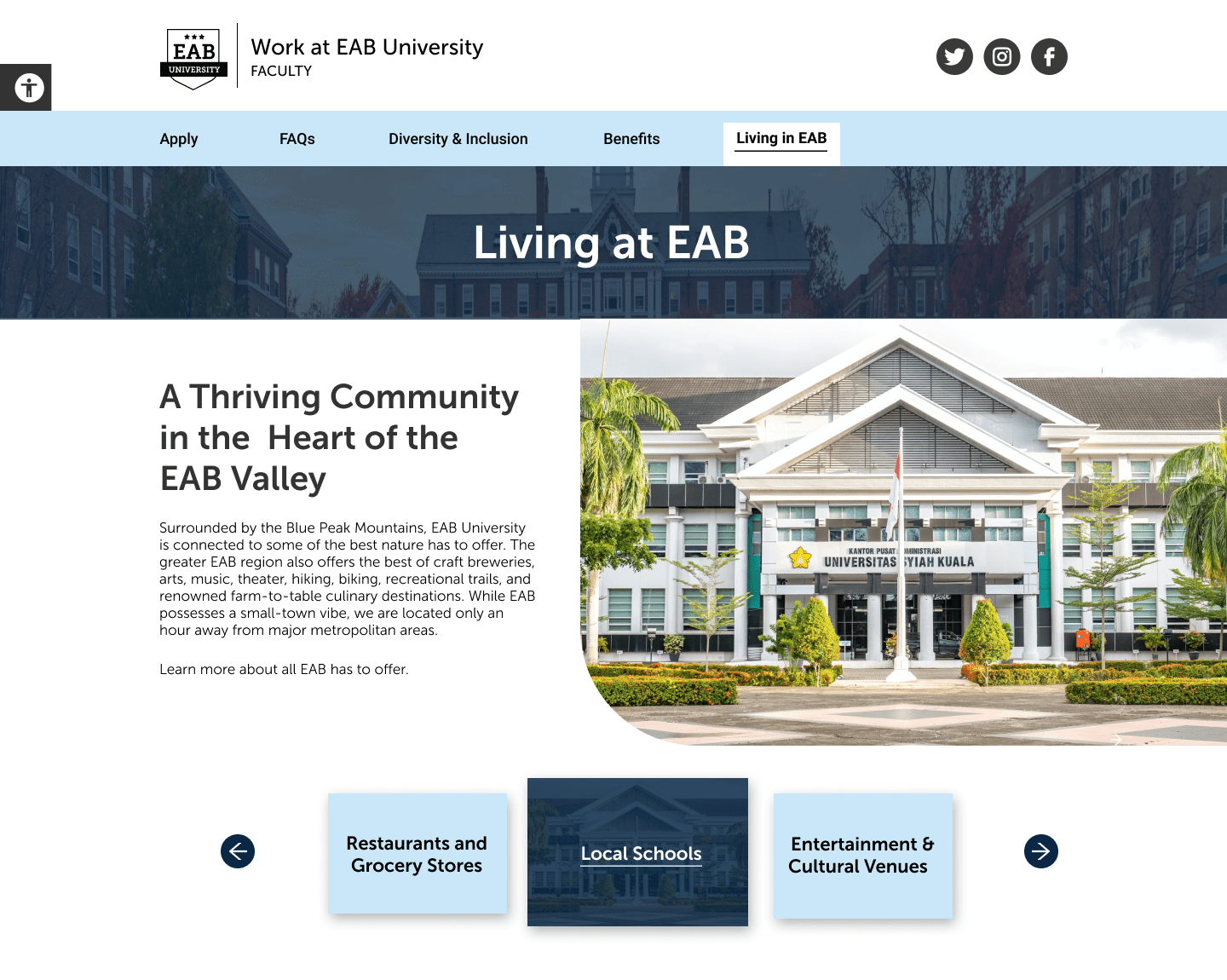10 tips to make your faculty recruitment website more candidate friendly
Recent efforts to build a more inclusive and equitable campus for BIPOC (Black, Indigenous, People of Color) faculty have exposed flaws in the hiring process. With an abundance of PhD candidates in the labor market, institutions have historically needed to put little effort into pitching themselves to candidates and building a sense of welcomeness and belonging among prospective faculty. Most institutions’ websites are not designed with prospective faculty in mind. In fact, the majority only post job openings–and no other information about the institution and the surrounding community.
To attract a diverse range of faculty candidates, institutions must pitch not only the professional aspects but also the personal aspects of what it means to be welcome and included in the community. To improve the candidate experience, start with one of the first places candidates go to learn more: your website.
Institutions should create a landing page specifically dedicated to prospective faculty candidates. Below, EAB created a mock website that is specifically designed to inform and recruit future faculty members. The website features 10 essential components that highlight your community, help candidates know what to expect from the recruitment process, and prioritize navigation and accessibility. Use the mock website to explore website features that craft a compelling narrative without compromising functionality. Next, consider opportunities to improve your own institution’s website.



10 components for an ideal faculty recruitment website
1. Elevate your diversity commitment
Include a diversity statement on the landing page that explains the work your own institution is doing and how it aligns with the institution’s mission. Make this statement personalized—not just the standard, boilerplate diversity statement legally required for job descriptions.
2. Ensure candidates can easily navigate your website
Include a toolbar that remains consistent across all hiring-related pages. Candidates should always be able to navigate back to the home page and jobs page within one click at all times.
Minimize the amount of text on the website with features such as hover menus and accordion-style organization. This helps candidates quickly navigate your website and avoid irrelevant information.
3. Prominently feature job openings
Ensure candidates can easily find job openings and apply. Link to the jobs page on the top toolbar and use action-oriented language like “apply.”
Once candidates are on the jobs page, ensure they can easily find positions relevant to them. Allow candidates to filter relevant job openings by position type and location (if applicable).
Keep the jobs page up-to-date and take down job postings that are no longer open.
4. Provide FAQs about the hiring process
Include FAQs specific to faculty candidates to address common questions about the hiring process:
- How to use the application system
- Hiring process timeline
- Information needed for the job application
- Salary information
- Who to contact with questions or concerns
- Accessibility concerns
5. Include information beyond standard benefits to reduce bias
In addition to standard benefits (e.g., insurance offerings), highlight benefits that support individuals with varying personal circumstances. Providing this information up front ensures candidates do not have to ask benefits-related questions during the interview process, which may introduction bias and discrimination. Benefits may include:
- Employee assistance programs
- Parental leave information
- Childcare
- Tuition assistance
- Partner placement
- Commuter benefits
6. Help candidates envision working at your institution
Use a mixture of photos, quotes, and short videos to communicate faculty experiences.
Include testimonials of faculty and staff from different backgrounds to highlight different perspectives. (But not exclusively from faculty and staff from underrepresented backgrounds: candidates will see it as false and inauthentic.)
7. Provide accessibility information
Ensure candidates with accessibility needs know who to contact to receive appropriate accommodations. Include this information on the homepage, in the FAQs, and in individual job postings.
If possible, also include functionality on all institutional webpages that allow visitors to use accessibility functions such as:
- A screen reader
- Functionality to navigate by keyboard
- Option to change color contrast
8. Showcase your DEI work with a dedicated page
Dedicate a page on your faculty recruitment website to your institution’s diversity and inclusion efforts. Include additional information about your institution’s commitment to diversity such as:
- Your institution’s DEI Strategic Plan
- Updates on the progress of your institution’s DEI efforts
- Your institution’s values
- Articles that highlight your institution’s work in the community
- Awards your institution received for being an inclusive place to work
9. Highlight campus resources for well-being
Dedicate a page on your faculty recruitment website to your institution’s diversity and inclusion efforts. Include additional information about your institution’s commitment to diversity such as:
- Your institution’s DEI Strategic Plan
- Updates on the progress of your institution’s DEI efforts
- Your institution’s values
- Articles that highlight your institution’s work in the community
- Awards your institution received for being an inclusive place to work
10. Include information about community resources
Candidates must be able to envision themselves living in your community to seriously consider taking a position at your institution. Highlight resources that show what it is like to live in your community and what resources are available, particularly for candidates that may not immediately see themselves represented in your community.
Lean on resources already created by your institution or community organizations such as:
- Information for grocery stores and restaurants that feature diverse foods and cuisines (e.g., Kosher or Halal food)
- Barber shops and hair salons for Black hair care
- Housing information for the local community
- Houses of worship
- Local K-12 schools, with demographic breakdown and other relevant information
- Cultural venues (e.g., art centers, performing arts centers, museums)
This resource requires EAB partnership access to view.
Access the tool
Learn how you can get access to this resource as well as hands-on support from our experts through Strategic Advisory Services.
Learn More